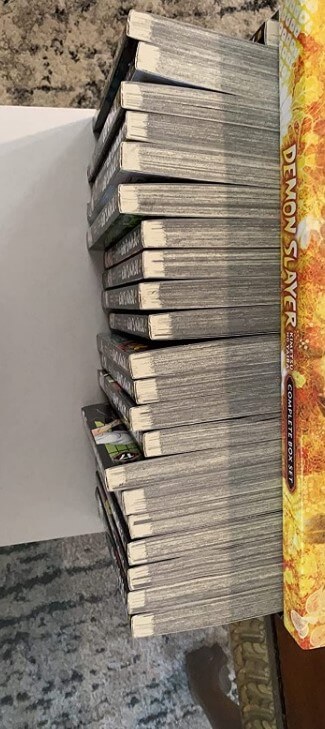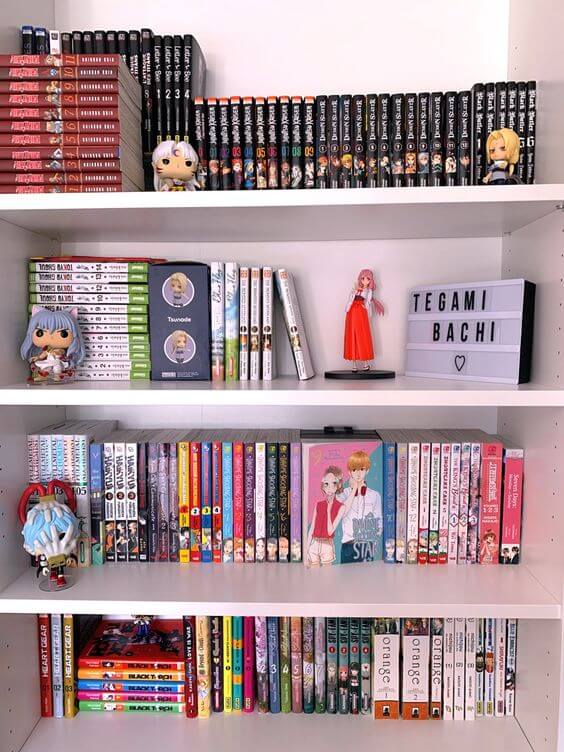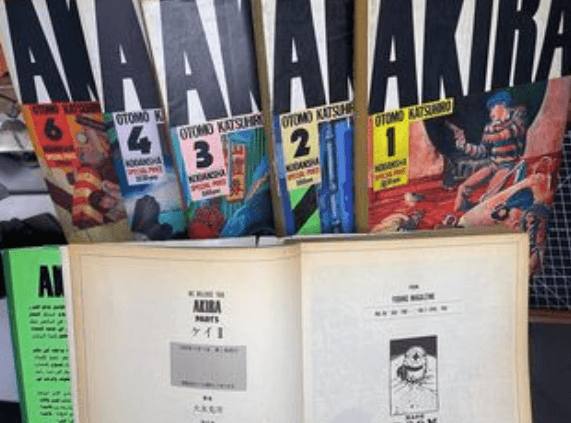How To Stop Manga From Turning Yellow? Discover expert tips to prevent & reverse paper aging, keeping your treasured volumes pristine & vibrant!
This guide on 'How To Stop Manga From Turning Yellow?' unlocks the secrets to preventing and reversing paper aging, ensuring your beloved manga collection stays vibrant and pristine for years to come.
Dive into simple yet effective strategies for protecting your manga from the sun, humidity, and other paper foes. Let's keep those stories shining!
How To Stop Manga From Turning Yellow?
Shield your manga from sunlight, heat, and humidity. Store them in acid-free boxes, wear sleeves, and keep cool with silica gel. Isolate yellowed volumes to prevent spread. Remember, prevention is key for a vibrant collection!
Here are 8 tips on how to stop manga from turning yellow:
Keep Manga Away From Sunlight
This is the first warning issued on any product we’ve seen in our lives. Sunlight is extremely powerful and contains UV rays that can damage the substances in the paper which as a result turns pages into yellow color.
Hence, ensure your manga books aren’t kept on a bookshelf or table that is close to a window or an area that’s exposed to sunlight.
Keep Manga Books Under Moderate Temperature
Storing your manga books in places where it isn’t too hot or too cold can also prevent yellowing in pages. Keeping your manga books in areas where it’s too dry can cause pages to become brittle and avoid wet places as well as they can cause your manga books to grow mold.
You can identify the ideal place for you to store your manga books by using a thermometer to measure the temperature. The ideal temperature should be below 25° Celsius (77° Fahrenheit).
In addition, to control the humidity level in the air you can use an air humidifier or a dehumidifier. The ideal humidity level can be anywhere between 30% to 50%. Hence, you don’t have to worry about your manga books turning yellow much quicker.
Maintain the same temperature always
Now that you know the ideal temperature and humidity levels to avoid yellowing in your manga it’s also best to ensure you maintain the same temperature levels throughout. You can do this by keeping your manga books in a room which has the same temperature throughout the year.

In addition, don’t forget to keep your manga books in place after you’ve taken them to read because a change in place can also mean a change in temperature and hence results in quicker yellowing.
Do not read manga books under direct sunlight
This is one of the crucial steps most of us forget when reading manga books. It’s never okay to expose your manga books to direct sunlight hence avoid taking manga books to the beach or park.
If you’re someone who loves to read books in an outside environment then make sure you read your manga in a shady place that’s away from sunlight.
Provide Enough Air Circulation For Your Manga Books
Don’t store your books in packed places where there’s little to no air. This can only be a detriment to your manga books.
When you place your books on the shelf make sure to leave a bit of space between each book to ensure a good amount of air circulates between them. This will ensure harmful gases aren’t built up between the books and pages.
Use UV Filters To Protect Your Manga From UV Rays
Although you keep your books away from the UV rays of sunlight, there might still be persistent UV rays in your room either due to your light bulb or whatnot. If you want to block UV rays from affecting your books then you can opt to buy a UV filter.
A UV filter absorbs the ultraviolet light and rays and can prevent your manga books from being damaged and turning yellow.
Segregate Yellowed Manga or Books
If you have manga or any other books that have become victims of yellowing then make sure to keep them away from manga books that are in good condition.
This is because yellowed manga books would be emitting gasses or other substances which can spread to new manga books and cause them to turn yellow.
Open your manga books regularly
Don’t neglect to care for your mangas after you’ve finished reading them. Open them from time to time to freshen them with air as pages tend to turn yellow faster when books are kept close for a long period.
How To Remove Yellowing From Manga?
Unfortunately, completely removing yellowing from manga is difficult. Paper naturally degrades over time, especially with exposure to light and heat. However, there are methods to lessen the appearance of yellowing, for example using fine sandpaper (400+ grit). Carefully sand edges (not pages) for slight improvement.
Here are more ways to remove yellowing from manga:
Use Sandpaper
This is the easiest and cheapest method you can follow to remove yellowing from manga books. When buying sandpaper choose 100-grit sandpaper that’s very fine. Use this to rub finely on yellow pages and you can get 320-grit sandpaper to smoothen the pages although this is optional.

Use Baking Soda
Wear latex gloves and disperse baking soda on pages that are affected by yellowing. Then soak a clean white cloth in hydrogen peroxide and drain excess liquid. Gently wipe on areas where yellowing is prevalent and let it dry completely before moving on to the next page.
However, this is the riskiest method to remove yellowing because the process involves chemicals like hydrogen peroxide and bicarbonate soda which can further damage your books.
Therefore pay heed to the ramifications and carefully consider them before trying any of these methods. You could still buy a new manga book using the amount of money you spend on using these methods.
Professional Restoration
Professional restoration for yellowed manga is a delicate process typically reserved for valuable or sentimental volumes. Here's a breakdown of what it entails:
Assessment: The conservator will first examine the manga to determine the extent of yellowing, paper type, and any existing damage. This helps them decide the safest and most effective restoration approach.
Cleaning: Depending on the condition, the conservator might gently clean the surface to remove dirt and grime that could contribute to further yellowing. This might involve specialized sponges or brushes chosen to avoid damaging the paper fibers.
Chemical Treatments: In some cases, the conservator might use carefully controlled bleaching agents to lighten the yellowing. These are typically weaker than household bleaches and specifically formulated for paper to minimize harm.
Paper Strengthening: If the paper is brittle or weakened, the conservator might apply strengthening agents to improve its durability and prevent further damage.
Repairs: If there are any tears, rips, or missing pages, the conservator can perform skilled repairs using archival-quality materials and techniques.
Binding: In extreme cases, the manga might need complete rebinding using acid-free materials to preserve its structure and prevent further yellowing from acidic adhesives.
Documentation: Throughout the process, the conservator will document the steps taken and any materials used to ensure transparency and preserve the manga's history.
Cost and Availability: Professional restoration can be expensive, ranging from hundreds to thousands of dollars depending on the complexity of the work and the conservator's expertise. Finding a qualified conservator specializing in paper or book restoration can also be challenging, so doing your research beforehand is crucial.
Considerations: While professional restoration can significantly improve the appearance of yellowed manga, it's important to understand that it's not always a perfect solution. Some yellowing might remain, and the process itself can be invasive and potentially alter the paper's texture or feel. Weighing the cost, potential risks, and sentimental value of the manga is essential before making a decision.
Remember, prevention is always the best approach. Implementing proper storage and handling techniques can significantly slow down the yellowing process and preserve your manga for years to come.
What Causes Manga To Turn Yellow?
Let’s begin by knowing the reasons behind manga pages turning yellow. It took me a while to learn that it was just scientific reasons rather than my manga store owner selling me fraudulent manga copies.
Manga or any books are made with paper and we know paper is made out of wood.
Basically, wood consists of elements like cellulose and lignin. Now cellulose is a colorless component and it’s what most reflects light on paper which makes paper have a white color.
Meanwhile, lignin is a polymer component that makes the wood stronger, and stiffer and which binds the cellulose together.

While cellulose is a colorless substance, lignin is a dark-colored element that gives color to paper. For instance, we’ve seen cardboard boxes and paper bags having a brown color and lignin is the reason for that.
Although paper has a white color when it’s newly made, cellulose and lignin can cause the paper to turn yellow over time due to oxidation.
When manga books are exposed to sunlight and oxygen, lignin can cause yellowing in the papers eventually and it also changes how the paper reflects light as well.
In addition, lignin is more prevalent in cheap quality paper than premium quality paper. This is because good quality paper goes through a deep bleaching process which removes most of the lignin hence they take a longer time to turn yellow than dull paper.
Therefore a manga book turning yellow depends on the quality of paper used by the publisher. While most manga publishers use lower-quality paper to reduce costs due to excessive publishing, manga books are more susceptible to turning yellow.
- Related: How Much Does Manga Cost?
- Related: What Are Manga Chapters?
- Related: Best Manga of All Time
How Long Do Manga Pages Take To Turn Yellow?
Well, this solely depends on the manga publishers and what quality of paper they use to publish manga books. As we mentioned, cheap-quality paper is prone to turning yellow much faster than higher-quality paper.
If manga publishers use high-quality paper to publish their manga books then it would probably take nearly 10 to 15 years for the manga books to turn yellow. Similarly, manga books that are printed with lower quality paper would only take up to 5 years for the paper to turn yellow.

However, the duration for the manga pages to turn yellow also depends on factors like humidity, air temperature, and oxygen levels. If you live in an area where it’s mostly sunny and the temperature is relatively high then your manga books are highly likely to turn yellow much quicker than predicted.
In this case, a manga book with premium quality paper would take less than 6 years and manga books with cheap paper would take less than a year to turn yellow.
In addition, if you take your manga tankobon to read at the park or beach regularly then you’ll be able to witness yellowing at a much faster pace.
Also Read:



